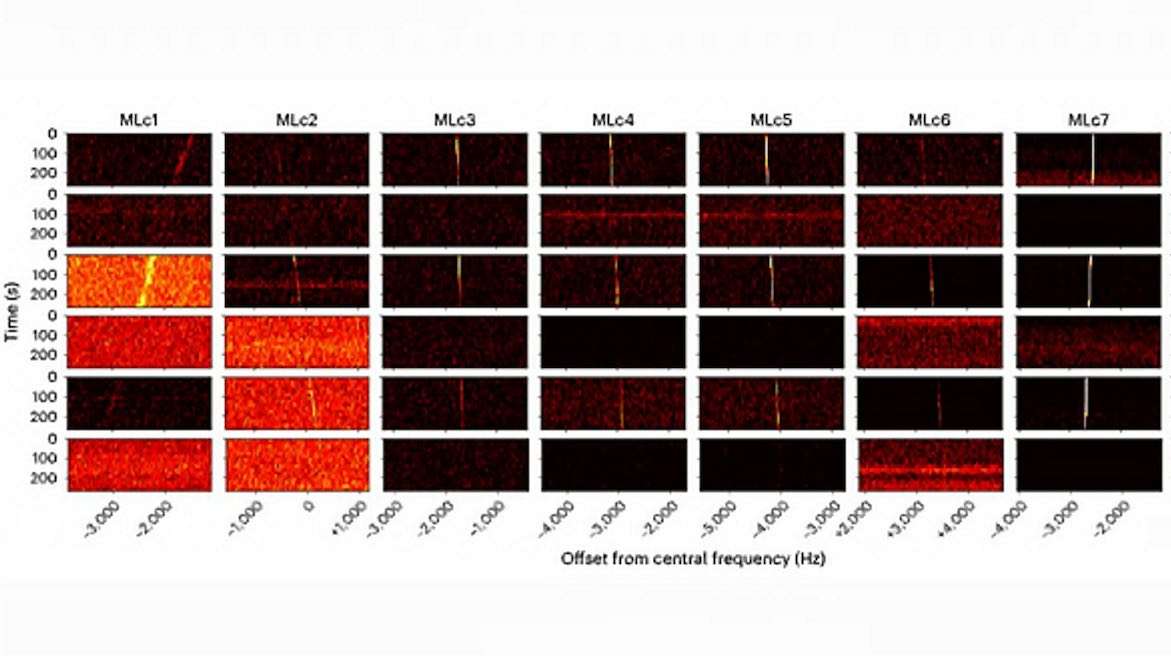Ringed Planet That Defies Known Physics Discovered in Outer Reaches of Our Solar System
Quaoar is the third-largest dwarf planet or planetoid of the 3,000 that orbit the sun out beyond Neptune, and it's also ringed.

Astronomers have picked up eight mysterious radio signals that could be coming from aliens sending messages with technology more advanced than our own.
The electromagnetic waves were detected using state of the art AI (artificial intelligence), or deep learning.
The signals were sourced to areas surrounding five ‘nearby' stars 30 to 90 light years away.
The pulses were ‘hiding in plain sight' among a huge number of recordings from more than six years ago.
An international team developed a computer algorithm to analyze the unimaginably large amount of information in more detail.
Lead author Peter Ma, an undergraduate at the University of Toronto, said his team searched through 150 TB of data from 820 nearby stars. (One terabyte could hold 1,000 copies of the Encyclopedia Brittanica).
"The dataset had previously been searched through in 2017 by classical techniques but labeled as devoid of interesting signals."
It was collected by the Green Bank Telescope in West Virginia, which is bigger than the Statue of Liberty and part of the Breakthrough Listen project aimed at identifying extra terrestrial activity.
No ‘targets of interest' were originally indicated. But the new neural network found this to be far from the case.
Manual re-examination also confirmed the findings shared several key characteristics. The signals were narrow band, meaning they had a small spectral width of just a few Hz (Hertz). Natural phenomena tend to be broadband.
"The key issue with any techno-signature search is looking through this huge haystack of signals to find the needle that might be a transmission from an alien world," explained Dr. Steve Croft, a California astrophysicist with the Breakthrough Listen team (and one of Ma's research advisors). "Peter's algorithm gives us a more effective way to filter the haystack and find signals that have the characteristics we expect from techno-signatures."
Furthermore, the readings, reported in the journal Nature Astronomy, were ‘sloped', indicating acceleration.
They also appeared only when the instrument focused on a specific celestial source, disappearing when it pointed away.
Radio is a great way to send interstellar information. It passes through dust and gas at the speed of light—20,000 times faster than our best rockets.
Many SETI (search for extraterrestrial intelligence) efforts use antennas to eavesdrop on any signals aliens might be transmitting.
"These results dramatically illustrate the power of applying modern machine learning and computer vision methods to data challenges in astronomy, resulting in both new detections and higher performance," said co-author Dr. Cherry Ng, of the French National Centre for Scientific Research in Paris.
"Application of these techniques at scale will be transformational for radio techno-signature science."
The researchers are now planning to deploy the algorithm on the SETI Institute's COSMIC tool in New Mexico, where Jodie Foster heard an alien signal in the 1997 movie Contact. It's been surveying 40 million stars for ‘techno-signatures'
Since SETI experiments began in 1960 with Frank Drake's Project Ozma at the same Green Bank Observatory used in this latest work, technological advances have enabled researchers to collect more data than ever.
The massive volume requires supercomputers that are breaking new ground in the quest to answer the question, ‘Are we alone?'.
Be the first to comment